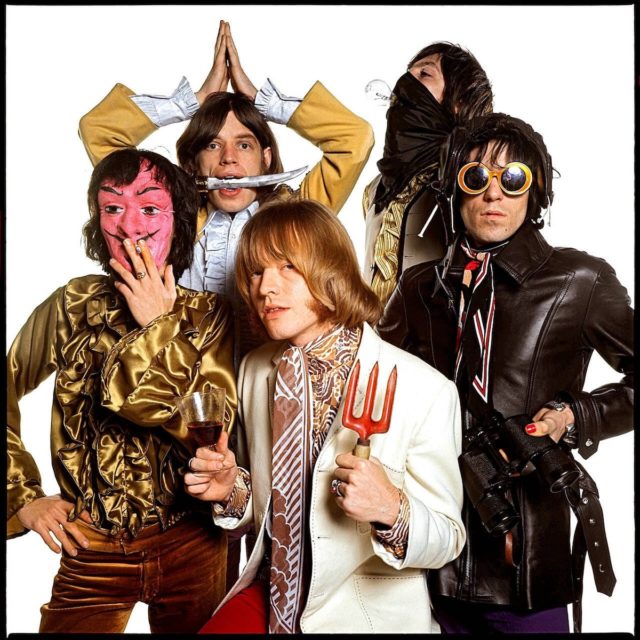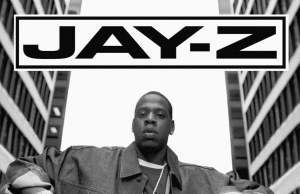 I am currently reading Paul Trynka’s excellent biography of Brian Jones, chosen because I realized I knew precious little about the man who formed and named the greatest rock band of all time.
I am currently reading Paul Trynka’s excellent biography of Brian Jones, chosen because I realized I knew precious little about the man who formed and named the greatest rock band of all time.
Jones was in The Rolling Stones from their formation in 1962 until he was encouraged to leave in June 1969. Original keyboardist Ian Stewart was asked to leave in 1963 because manager Andrew Loog Oldham believed six members was too many — and Stewart, who was older, didn’t look the part. He went, without fuss, into the role of road manager and touring player. Jones’ replacement Mick Taylor was in the band from 1969 until he quit in 1974. Original drummer Charlie Watts died in 2021 and original bassist Bill Wyman left the band in 1993. The current version of The Rolling Stones is Mick Jagger, Keith Richards and Taylor’s replacement, Ron Wood. The core trio is augmented by Steve Jordan on drums, keyboardists Chuck Leavell and Matt Clifford, bassist Darryl Jones and saxophonists Tim Ries and Karl Denson.
They played Vancouver in July, and of the 20 songs in the setlist, eight were from the Jones era — nine if you include Gimme Shelter, which was from Let It Bleed. Brian only contributed to two songs on that album — congas on Midnight Rambler (which they played in Vancouver) and autoharp on You Got The Silver. More than just those eight songs, Jones was at least partially responsible for the band’s signature sound. Keef’s beloved open-G tuning was something Brian used to do, even though Richards says he was inspired by Ry Cooder. The intermingling guitars of Richards and Wood also have roots in the original lineup.
But Jones wasn’t much of a singer or a prolific songwriter. His significance to the band was that he was one of the first guitarists in the U.K. to be highly accomplished at electric blues, particularly slide guitar. By the time they made their fourth album, 1965’s Aftermath, Jones’ primary contribution to the band was as a multi-instrumentalist. We all know one of those musicians who — if you hand them any instrument — after just a few minutes, they’ve figured out how to play it. Before he was a Rolling Stone, Jones first learned how to play clarinet, because he was asmatic. The belief in the U.K. at the time was that woodwind instruments were beneficial for youth suffering from asthma. This is why Jones was often credited with contributing sax to various songs for the Stones and others. More famously, perhaps, were the distinctive, signature recorder parts he performed on Ruby Tuesday.
So I thought I’d go through the seven-year recording catalog of Brian Jones and highlight some of his major contributions, just so everybody knows how bloody brilliant he was.
Ruby Tuesday (Rolling Stones)
As I mentioned, Brian played the recorder on this so-called Jagger-Richards composition, which is actually a Jones-Richards composition. Mick had nothing to do with the writing of it. But Oldham really wanted to compete with The Beatles and their impressive, growing Lennon-McCartney catalog. Band-written songs were all labelled as Jagger-Richards, when they used to credit as Nanker Phelge — a fictional name which combined their friend and former flatmate Jimmy Phelge with “pulling a nanker” — slang for making a funny face. This is just one of many tracks which should have at least been credited to Nanker Phelge. Brian wrote the melody on the recorder, and the rest of the songwriting was completed around it by he and Richards.
Paint It Black (Rolling Stones)
Like Ruby Tuesday, this song has a melody written by — but not credited to — Jones. He wrote it on the sitar, which he plays. The vocal melody follows it, written by Jagger. Should be a Nanker Phelge credit. Think of the royalties lost from just these two classics. And there’s more…
Under My Thumb (Rolling Stones)
Yep. Brian again. This time he didn’t write the whole melody, but he did write and perform the main hook. It’s that six-note lick played on the marimba — which was one of several instruments left behind in the studio by the Baja Marimba Band. The Stones were working on the track, and Brian seized upon the instrument and came up with the signature hook. No songwriting credit. Not even Nanker Phelge — it’s another Jagger-Richards.
Snap Crackle Pop (Rice Krispies)
In 1963, the uncredited Rolling Stones did the music for a U.K. Rice Krispies commercial. The song was predominantly written by Jones. It’s all kinds of awesome.
I Wanna Be Your Man (Rolling Stones)
In late 1963, Paul McCartney offered the Stones a song which was written for Ringo Starr to sing. The Stones recorded it first, in October, followed by The Beatles two weeks later — with Ringo on lead vocal. The Stones released it as their second single on Nov. 1, while The Beatles included it on their second album, With The Beatles, on Nov. 22. Brian threw himself into the recording of it — playing slide and steel guitar, providing a rare backing vocal and acting as producer, due to the absence of Oldham that day. Done in a garage rock-style, it is considerably more raw and wild than The Beatles version.
No Expectations (Rolling Stones)
Towards the end of his time in the band, Brian was less and less willing, welcome, inclined or able to contribute in the studio. He’d grown tired of playing guitar. Grown dependent on heavy drug and alcohol use. And lost his place in the band. The last album released during his lifetime was 1968’s Beggars Banquet. He provides acoustic guitar and backing vocals on Sympathy For The Devil, harmonica on Dear Doctor, Parachute Woman and Prodigal Son, sitar and tambura on Street Fighting Man, and Mellotron on Jigsaw Puzzle and Stray Cat Blues. But his acoustic slide guitar on No Expectations remains one of his most beautiful recorded performances. In the summer of ’68, Jones had been playing along with the band as the song was being recorded, and they were quite taken with the part he’d come up with. It’s impossible to imagine the song without it now. This part, in conjunction with Jagger’s lyrics, makes for an incredibly poignant and moving moment — essentially narrating the end of the brilliant, troubled artist’s time with the band he started. When the band performed the song in December at the Rock & Roll Circus, Jones could barely manage. It was his last appearance with them.
A Mess Of The Blues & You’ve Had Better Times (Peter & Gordon)
Jones contributed to a few Peter & Gordon tracks, but these two especially. He performs the dominant harmonica on A Mess Of The Blues from 1964 and is the drummer on their 1968 track You’ve Had Better Times.
Yellow Submarine & You Know My Name (Look Up The Number) (The Beatles)
Of all the Stones, Jones got along with The Beatles best. They put him on their songs twice. The first time was in 1966 as part of the vocal chorus of Yellow Submarine, from Revolver. He also performed a wind instrument called an ocarina and tinkled glasses together. A year later, he provided saxophone on the gloriously weird You Know My Name (Look Up The Number), which wasn’t released until after Jones’ death when it served as the B-side to the Let It Be single.
All Along The Watchtower (Jimi Hendrix)
Jones provides the distinctive percussion
The Last Time (Rolling Stones)
This 1965 classic was the band’s first original single. While Brian wasn’t credited with the songwriting, he did play and write the main guitar riff.
Is This What I Get For Loving You? (Marianne Faithfull)
Jones had a brief involvement with singer Marianne Faithfull before she moved on to Richards briefly and eventually, famously, Jagger. In 1966, Jones played euphonium (baritone) on her track Is This What I Get For Loving You?
I’m Not Sayin’ (Nico)
Jones also had a thing with the chanteuse Nico before she was a member of The Velvet Underground. In 1965, a Gordon Lightfoot song was chosen as her first single on Oldham’s fledgling Immediate Records. It was co-produced by pre-Yardbirds Jimmy Page, who provides 12-string guitar. Jones ended up playing guitar on it as well.
Basement Flat (McGough & McGear)
Roger McGough and Mike McGear (Paul McCartney’s brother) were two-thirds of the comedy group The Scaffold. In 1968, they made a “duo” album which featured Jones playing sax on two tracks — Summer With Monica and Basement Flat.
Blue Narcissus (Haphash & The Colored Coat)
Haphash & The Colored Coat were predominantly a psychedelic graphic design collective which did a lot of freaky gig posters and the like. They also did even freakier music. In 1969 they made an album called Western Flier to which Jones contributed piano, harmonica and guitar. You can hear him best on Blue Narcissus.
365 Rolling Stones (Andrew Loog Orchestra)
Not officially released until the ’90s, this rarity is a chance to hear Jones performing lead vocals on a song — and handclaps.
Lady Jane (Rolling Stones)
Aftermath was Brian’s renaissance album — tackling so many different instruments, like the koto on Take It Or Leave It, saxophone on Dandelion, and harpsichord on Ride On, Baby. On this he provides a key part on the Appalachian dulcimer he had just bought. He also plays it on I Am Waiting.
A Degree Of Murder (Brian Jones)
While dating actress Anita Pallenberg, Jones wound up doing the soundtrack for one of her films, 1967’s A Degree Of Murder, from Germany. Jones arranged the music and mostly played harmonica. Jimmy Page was hired to provide guitar.
Yesterday’s Papers (Rolling Stones)
This Between The Buttons track from 1967, was the first song Jagger wrote all by himself. It is perfectly augmented by Jones’ vibraphone and backing vocals.
Cool, Calm & Collected (Rolling Stones)
From the same album, here we get Jones on kazoo.
Hear It (Rolling Stones)
Like the A Degree Of Murder soundtrack, this track has also never been officially released. The 1964 instrumental was written by Jones and Richards.
Thank You For Being There (Krysia Kristianne & Robin Williamson)
This was a Brian-penned poem which was set to music for inclusion in a 1990 compilation called True Voices.
2000 Light Years From Home (Rolling Stones)
Brian’s Mellotron work on this psychedelic banger from Their Satanic Majesty’s Request is simply awesome. A close second was his Mellotron performance on She’s A Rainbow from the same 1967 album.
I Just Wanna Make Love To You (Rolling Stones)
Brian picked the Stones’ name from a Muddy Waters song, and he plays a prominent role on this other Muddy track, from the Stones’ debut LP in 1964. He plays guitar and percussion on the album — but also harmonica, as he does here, inspired by the part originally performed by Little Walter in 1954.
2120 South Michigan Avenue (Rolling Stones)
Another great harmonica performance by Brian. This one was on their 5×5 EP in 1964 — credited to Nanker Phelge.
Not Fade Away (Rolling Stones)
Same. Jones on harmonica for the band’s first U.S. single.
Little Red Rooster (Rolling Stones)
This was Jones’ party piece. Back in 1964, there weren’t any guitarists who were as proficient with electric slide guitar as Brian was. He recorded this part on Richards’ brand new Fender Telecaster.
• • •
Area Resident is an Ottawa-based journalist, recording artist, music collector and re-seller. Hear (and buy) his music on Bandcamp, email him HERE, follow him on Instagram and check him out on Discogs.








































